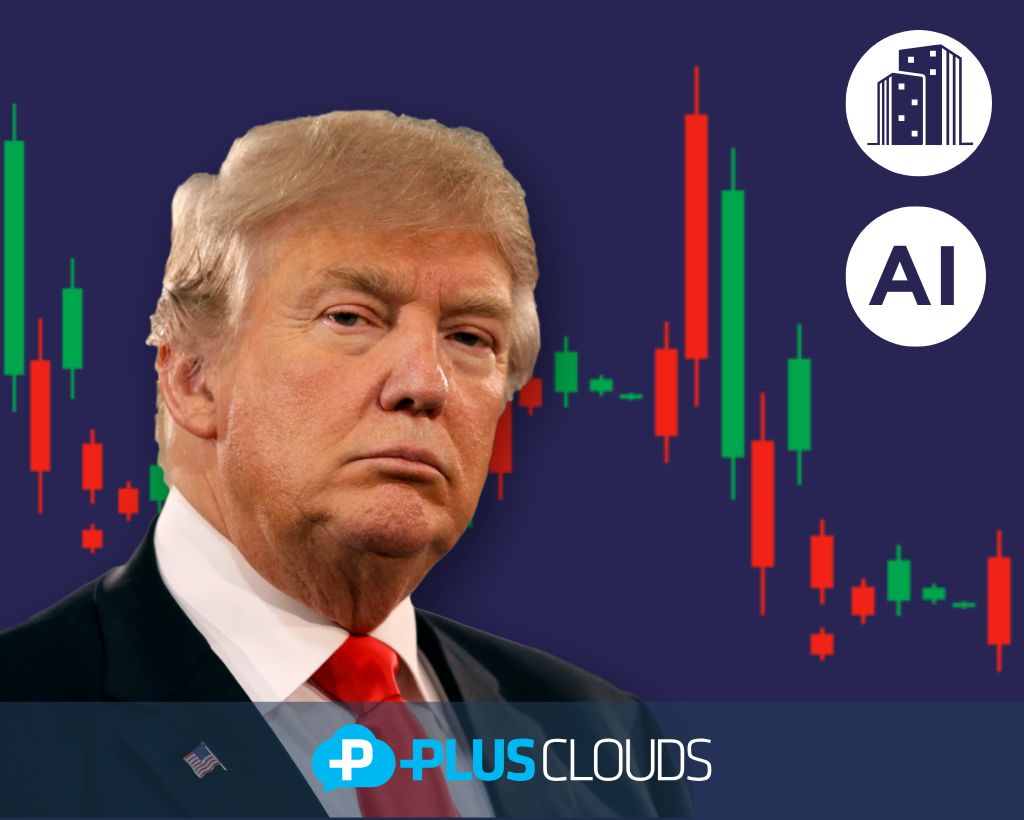
Business Intelligence as a Service
Try PlusClouds Eaglet service and find high quality B2B hot leads and opportunites with AI support.


Recently, the Trump administration launched an aggressive tax reform package in line with its electoral promises. This package has directly affected not only the American domestic market but also global financial flows, investment decisions, and particularly the real estate sector.
In this article, we will examine the multi-dimensional effects of these reforms in detail, particularly through the real estate sector in both the U.S. and globally, and provide tips on how real estate companies can emerge from this crisis with minimal damage.
In major markets like New York, San Francisco, and Miami:
There was up to an 18% increase in luxury home sales due to tax cuts.
Housing demand has returned in high-tax states; particularly dual-income families benefited from the advantages.
Risk:
Along with excessive demand, prices have inflated speculatively. The price/rent ratio has reached its highest level since 2021.
Social inequality has deepened among those unable to become homeowners.
The corporate tax cut has made office investments attractive again for large companies.
However, project costs have increased by 12-15% due to import tariffs on construction materials.
Conclusion:
Rental prices in office and industrial sectors have been under upward pressure.
There has been an increase in co-working spaces and ESG (environmental, social, and governance) focused real estate projects.
Small to medium-sized contractors have been struggling due to import tariffs.
Major developers have been able to increase capital thanks to tax advantages; the industry has shown a tendency towards scaling up.
The rise in material prices and labor shortages have reduced the housing supply by 8% compared to 2024 (NAHB data).
European, Chinese, and Gulf capital has shifted to the U.S. market due to tax advantages.
Particularly in “tax attractiveness hubs” like Miami, Austin, and Houston, property purchases have increased by nearly 30%.
Data Example:
54% of the real estate investments from funds based in Qatar and the United Arab Emirates in the second quarter of 2025 have been directed to the U.S.
Price increases in markets such as Europe and Canada have slowed down due to the capital flowing to the U.S.
Global real estate funds have shifted their portfolio weights to the U.S.
Impact:
There have been declines of up to 20% in new project launches in cities like Berlin, Toronto, and London.
Chinese investors have returned to the domestic market due to both tax and geopolitical pressures.
- Institutional investors: Increased their commercial real estate holdings in major cities due to tax advantages and depreciation benefits.
- Individual investors: The AirBnB, vacation home, and second-home concepts have returned. Pressure to purchase in the luxury segment has increased.
The new tax regulations are forcing developers to transform not only financially but also technologically. Increased competition, supply shortages, and construction costs have made digitalization inevitable.
For developers and real estate investors, moving projects to digital platforms, integrating with big data, and ensuring scalable cloud infrastructure present significant advantages.
PlusClouds is leading the digital transformation in the sector by offering customizable cloud infrastructure, data hosting, and security solutions for real estate developers and investment firms.
If you want to digitize your real estate investments, share data securely with international buyers at high speed, and gain a competitive advantage, you can get information immediately from www.plusclouds.com and elevate your cloud infrastructure to the next level.
Budget deficit and public debt: As government revenues decrease due to tax cuts, infrastructure spending is increasing.
Conflict with Fed policy: Inflationary pressures raise the risk of interest rate hikes.
Risk of a real estate bubble (especially in coastal cities)
Exit of small construction firms from the sector → monopolization
Resource shortages in social housing projects
Although Trump’s tax reforms have revitalized the American real estate market in the short term, they have led to imbalances within the market and deviations in global capital trends in the long run. The lasting effects of these reforms will shape not only economic performance but also political stability, interest rate policies, and international relations.
From the perspective of the real estate sector, this period can be seen as a transitional phase that harbors both opportunities and threats, where investors need to carefully read the balance of “tax advantage + geopolitical stability.”